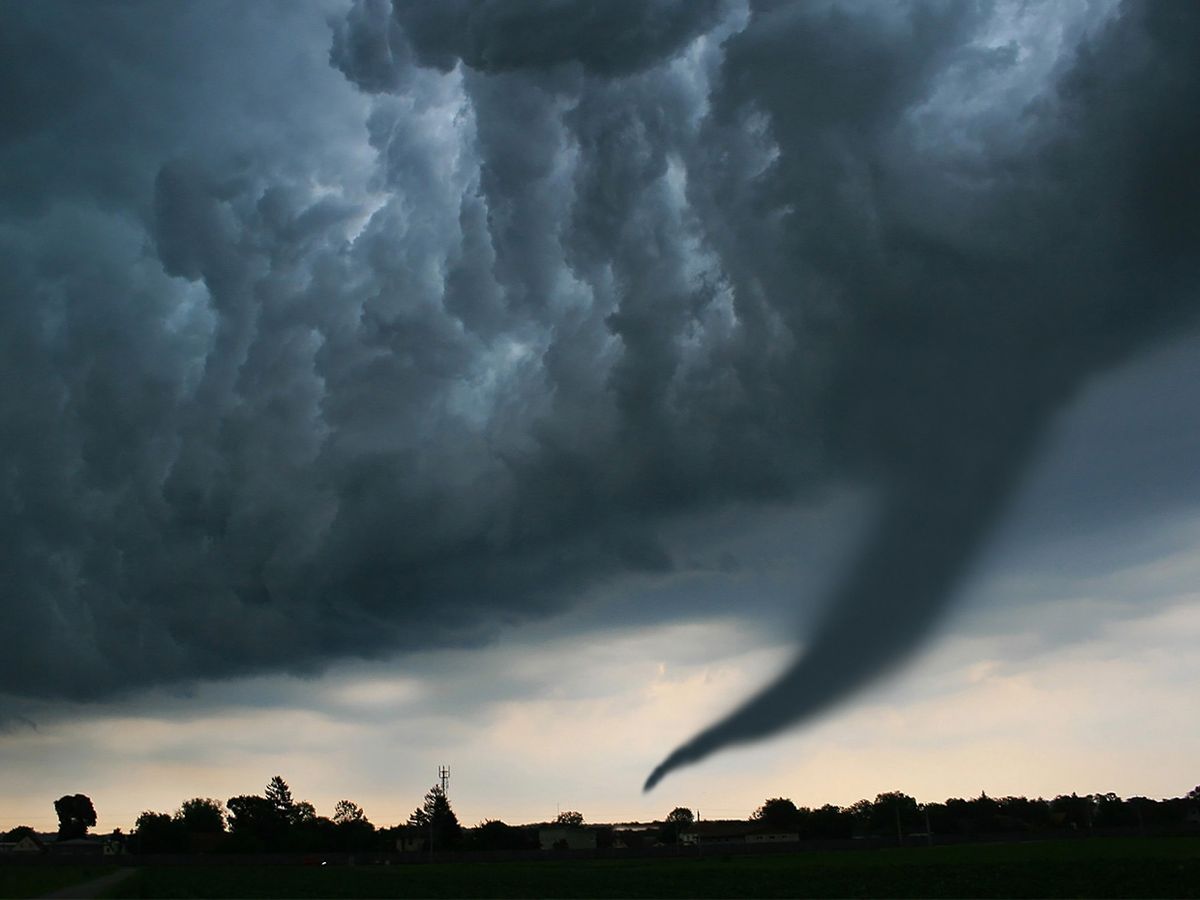Tornado survivors often compare the terrifying, deafening roars of a twister’s furious winds to the sound of a freight train. But storms also emit sounds that are inaudible to human ears right before producing a tornado. By detecting these infrasonic waves from miles away, researchers hope to develop an earlier, more accurate tornado warning system.
Today, weather agencies issue tornado warnings by closely observing storms for characteristic air movements. Warnings typically come about 10 minutes in advance. But most warnings are false alarms, says Brian Elbing, a professor of mechanical and aerospace engineering at Oklahoma State University. “Seventy-five percent of the time, tornadoes don’t occur,” he says.
The high rate of error causes ‘warning fatigue,’ which can be deadly. After a 2011 twister ripped through Joplin, Missouri, taking 162 lives, a federal report found that a majority of residents ignored or reacted slowly to warnings in the crucial minutes before the tornado hit.

Elbing is trying to understand the secrets held by a storm’s infrasonic signals in order to increase warning time, make warnings more accurate, and improve tornado prediction.
Earthquakes, avalanches, and rocket launches all generate infrasonic signals, which have frequencies below the range that humans can hear—generally considered to be 20 to 20,000 Hz. These low-frequency waves are weakly absorbed in the atmosphere so they can travel all the way around Earth. Infrasound has been used to locate enemy aircraft and to monitor for nuclear blasts and natural hazards.
In the late 1990s, scientists at the National Oceanic and Atmospheric Administration found that tornado-producing storms can emit infrasound signals up to two hours before tornado-genesis. NOAA deployed a demonstration infrasonic network to monitor tornados in 2003. Researchers including Elbing have more recently started their own observations, and are trying to improve the hardware and software to detect tornadoes by infrasound.
Tornados themselves also emit infrasound signals in the 0.5 to 10 Hz range depending on their size, Elbing says. He and his colleagues have set up a simple infrasonic array on the university campus to collect signals from both tornados and storms. The array consists of three commercial infrasound microphones placed in a triangle, spaced about 60 meters apart.
The challenge is to distinguish infrasound signals from wind noise. “It’s like being in a loud room trying to listen to somebody talk softly,” Elbing says. So the team has enclosed each microphone inside a container with four openings. A hose is attached to each opening, and the hoses are stretched out in opposite directions. Each hose manages to catch and funnel some infrasonic waves to its microphone, while reducing the amount of wind that reaches it.
Computers compare the signals recorded at each microphone, and perform filtering and signal processing to further minimize noise. If all three signals look alike, that rules out wind, Elbing says, because the noise from wind would be not coherent. By analyzing those signals, the researchers can then create a simple computer model of the fluid mechanism that produces the infrasound waves.
Their system had its first success last May, when a tornado hit Perkins, Oklahoma, which is about 20 kilometers from the university. Ten minutes before the tornado hit, the array picked up extremely strong signals. Based on the frequency, the researchers predicted a tornado size of 46 meters. That was precisely the official width of the twister’s destruction path. They are presenting their results today at the Acoustical Society of America meeting in Minneapolis.
This is just the first step. The group’s goal is to develop a computer model that can predict tornados. Elbing’s team now plans to collect data from more tornados to test and improve the model. “The biggest need is more observation,” he says. “There are only a handful of observations of tornadoes where you can look at the infrasound spectra.”
Editor’s note: This story was updated on 8 May to correct the name of the city affected by a 2011 tornado to Joplin, Missouri from Joplin, Montana.
Prachi Patel is a freelance journalist based in Pittsburgh. She writes about energy, biotechnology, materials science, nanotechnology, and computing.



